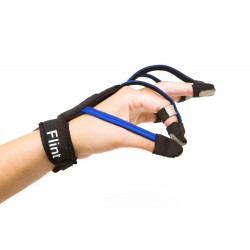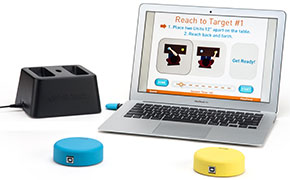Mirror Therapy in Neurological Rehabilitation:
Your Path to Recovery After Stroke
Table of Contents
- What is Mirror Therapy?
- How Mirror Therapy Works
- Mirror Therapy for Stroke Rehabilitation
- Mirror Therapy for Phantom Limb Pain
- Using Mirror Therapy in Complex Regional Pain Syndrome
- Benefits of Mirror Therapy
- Implementing a Mirror Therapy Program
- Limitations and Precautions
- Conclusion
What is Mirror Therapy?
Mirror therapy is a rehabilitation technique used primarily in neurological and physical therapy, utilizing visual feedback through the reflection of the unaffected limb in a mirror. This creates an illusion that the affected limb is moving normally, stimulating mirror neurons in the brain. This visual stimulation aids in the neural restructuring that improves motor function and sensory perception following stroke. The therapy was initially developed to treat phantom limb pain but soon expanded due to its effectiveness in various neurological conditions. By promoting neural plasticity, mirror therapy supports recovery by enhancing the brain’s capacity to reorganize and relearn functions lost after injury.
How Mirror Therapy Works
Mirror therapy works by positioning a mirror vertically between the patient's limbs. The patient moves their unaffected limb while looking at its reflection, creating an illusion that the affected limb is performing the movements. This visual feedback activates specific brain areas associated with movement, helping stroke patients improve motor function and reduce limb pain. The brain processes this visual information as if the impaired limb is genuinely moving, thus stimulating neural pathways and facilitating motor relearning. Regular repetition of these exercises strengthens neural connections, enhancing functional recovery.
Mirror Therapy for Stroke Rehabilitation
Stroke rehabilitation using mirror therapy is particularly beneficial in improving motor function in the affected limb. By regularly engaging in mirror therapy exercises, stroke patients can significantly enhance limb coordination, strength, and overall function after stroke. Mirror therapy has proven effective in both acute and chronic stroke rehabilitation settings. Studies have shown notable improvements in upper limb function, hand dexterity, and daily living activities when mirror therapy is integrated into rehabilitation programs. Additionally, mirror therapy boosts patient motivation and participation due to its interactive and rewarding nature.
Mirror Therapy for Phantom Limb Pain
Phantom limb pain is a common condition experienced after amputation, where patients feel pain in the limb that no longer exists. Mirror therapy effectively addresses phantom limb pain by visually representing the missing limb through mirror reflection. This visual input helps the brain reconcile discrepancies between visual and sensory feedback, reducing phantom limb pain significantly. Mirror therapy provides patients with an accessible method to manage chronic phantom limb pain, improving quality of life and reducing dependence on medications. Clinical evidence supports the consistent use of mirror therapy as a non-invasive treatment for phantom limb pain management.
Using Mirror Therapy in Complex Regional Pain Syndrome
Complex regional pain syndrome (CRPS) is characterized by chronic pain typically affecting an arm or leg after injury or stroke. Mirror therapy in CRPS involves viewing the unaffected limb's reflection, creating an illusion of pain-free movement in the affected limb. This method helps alleviate chronic pain and improve limb function by retraining the brain’s perception of pain and movement. Mirror therapy can reduce pain sensitivity, enhance limb mobility, and improve psychological well-being by helping patients visualize and experience movements without pain.
Benefits of Mirror Therapy
The benefits of mirror therapy extend beyond improved motor function and pain reduction. Regular use of mirror therapy can also enhance patients' motivation, confidence, and psychological well-being. Studies have shown significant improvements in upper extremity function, reduced chronic pain, and increased independence in daily activities among patients undergoing mirror therapy. Moreover, mirror therapy supports emotional recovery by helping patients regain confidence in their physical capabilities and improving their self-perception, thus facilitating a more comprehensive rehabilitation process.
Implementing a Mirror Therapy Program
A structured mirror therapy program should include consistent sessions guided by trained therapists in physical or occupational therapy. Sessions typically last about 20-30 minutes, focusing on movements that mimic real-life activities. The program can be adjusted based on the patient’s progress, ensuring personalized and effective rehabilitation. Successful implementation involves clear goal setting, careful selection of exercises tailored to individual needs, and regular evaluations to track progress and adjust interventions accordingly. Training caregivers or family members in mirror therapy techniques can further support the patient's rehabilitation at home.
Limitations and Precautions
Although highly beneficial, mirror therapy is not suitable for everyone. Patients with severe cognitive impairments or significant visual-spatial deficits may find it challenging. Therapists should carefully select suitable candidates to prevent negative emotional responses or frustration. Close monitoring and regular adjustments in therapy sessions are necessary to maintain effectiveness. It's also important to consider potential emotional responses triggered by the therapy, such as frustration or anxiety due to the perceived inability to perform movements correctly. Ensuring a supportive therapeutic environment and providing emotional support are critical components of successful mirror therapy interventions.
Conclusion
Mirror therapy is an innovative, evidence-based rehabilitation technique offering substantial benefits for stroke survivors and patients dealing with phantom limb pain and complex regional pain syndrome. Incorporating mirror therapy into comprehensive rehabilitation programs can significantly enhance recovery outcomes, motor function, and quality of life for patients. It provides a non-invasive, accessible, and effective way to aid in neurological recovery and pain management.
Want to try mirror therapy? Download the instructions.
References
-
Ramachandran VS, Rogers-Ramachandran D. Synaesthesia in phantom limbs induced with mirrors. Proc Biol Sci. 1996;263(1369):377-386.
-
Thieme H, Mehrholz J, Pohl M, Behrens J, Dohle C. Mirror therapy for improving motor function after stroke. Cochrane Database Syst Rev. 2018;7:CD008449.
-
Rothgangel AS, Braun SM, Beurskens AJ, Seitz RJ, Wade DT. The clinical aspects of mirror therapy in rehabilitation: a systematic review of the literature. Int J Rehabil Res. 2011;34(1):1-13.
-
Moseley GL. Graded motor imagery for pathologic pain: a randomized controlled trial. Neurology. 2006;67(12):2129-2134.
Be inspired by a story of survival after a stroke


The FitMi kit is perfect for rehabilitation.
Like many other customers, I was skeptical about buying this device because of the price. I bought FitMi for my 21-year-old daughter who suffered a severe brain injury almost two years ago. Movement in her left arm and leg was nearly impossible — until I discovered this kit.
So far, we haven't yet done exercises for the leg, mainly focusing on the arm to restore initial movement in her hand. I also think the disks are a bit too large for her, but with the silicone covers, we manage. From what we can see, exercising with FitMi is something truly extraordinary.
Thank you so much for helping my daughter regain some mobility!
Renata and Mariola (12.04.2020)

So far, we haven't yet done exercises for the leg, mainly focusing on the arm to restore initial movement in her hand. I also think the disks are a bit too large for her, but with the silicone covers, we manage. From what we can see, exercising with FitMi is something truly extraordinary.
Thank you so much for helping my daughter regain some mobility!



